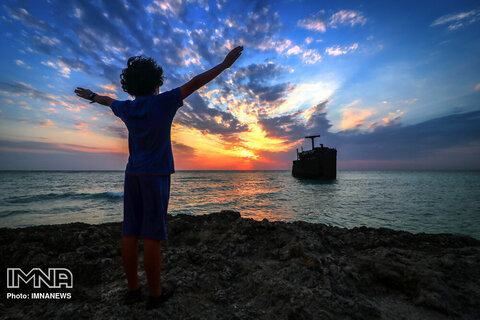Iran (IMNA) - Iran is recognized as one of the top five countries globally in terms of tourism resources, boasting a wealth of historical, cultural, and natural attractions. The country features two distinct coastlines, each providing different seasonal qualities and recreational opportunities. The Iranian coastline spans approximately 750 km along the Caspian Sea and around 2,250 km along the Persian Gulf and Oman Sea.
Coastal tourism is increasingly viewed as a vital component of economic development strategies, provided that tourism enterprises prioritize long-term commitments to local communities over property development and investment speculation. Many global strategies incorporate tourism as a solution to enhance national and regional economies.
With half of the world's population living within 100 miles of a coastline—a number expected to rise dramatically—UNCTAD estimates the value of the blue economy related to sea-based development at around $3 trillion. Major economies have expansive blue economies, with coastal and maritime tourism being the largest sector in the EU blue economy in terms of gross value added and employment.
Coastal tourism encompasses land-based activities such as swimming, surfing, sunbathing, and hydrotherapy, which significantly contribute to job creation—approximately four additional jobs are generated for every position in the sector.
Iran's maritime landscape includes 190,000 square kilometers of sea area and 5,800 kilometers of coastline, making marine economic development a crucial element of its national economic strategy. Notable candidates for tourism development include Hormuz and Qeshm islands in the Persian Gulf, which are rich in historical monuments.
The Persian Gulf is particularly promising for marine tourism due to its beautiful islands that serve as habitats for migratory birds and unique marine species. However, despite these potentials, tourism is primarily limited to Kish Island, known as a free trade zone.
The Caspian Sea's shores feature rolling Hyrcanian forests and remnants of significant human civilizations, attracting nature enthusiasts interested in hiking and eco-tourism. Anzali serves as the most important seaport in the Caspian Sea and is renowned for producing premium caviar while linking Iran to Caspian and Eurasian states.
Chabahar and Gavater beaches along the Sea of Oman are vital sites for scientific tourism focused on geomorphology, coastal geology, coral studies, fisheries, and diving.
Iran’s northern and southern coasts are well-positioned for maritime tourism due to their natural beauty, inviting climates, and extensive coastlines. However, infrastructure development is essential for expanding this sector.
By enhancing its maritime tourism capabilities, Iran could achieve significant economic growth while improving its global image among tourists.


Your Comment